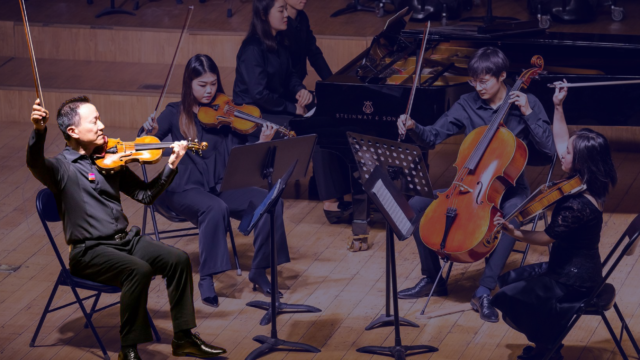Prelude and Table of Contents: Fall 2021
From the Editor
There is nothing like hearing an orchestra live and in person. Okay, that’s
not a novel insight, but the return of in-person concerts this fall was a stark
reminder of what we have missed—and a revelation. Hearing an orchestra
in full throttle after all this time was almost too much. A kind of synesthesia kicked in. You didn’t so much hear the tympani as sense their rumbles tsunami-ing from the stage and into your mind. Plangent inner voices emerged from plush textures. Strings in extremis had the urgency of an ice pick. And a single horn felt like heartbreak—or a burst of sonic joy.
Orchestras have been deploying virtual concerts, Zoom concertos, and related digital media to make more music available in more ways—it’s a trend that’s here to stay. The pivot to digital means that pressing issues in classical music, such as racial inequity and underrepresentation, are being addressed with immediacy. Conductors chat from home on YouTube; musicians share their artistry and their lives online. All the same, watching a concert on a phone or laptop—well, there ain’t nothing like the real thing.
In this issue, we report on how orchestras are coping with vaccination and
masking mandates, personal distancing, and even ventilation systems. This is happening as orchestras are reckoning with social injustice, centering voices that were long ignored. And while musicians of Asian descent are often highly visible on orchestra stages, that representation has not translated into equitable roles behind the scenes or at the creative level.
And this issue looks at the myriad, sometimes unexpected new roles that orchestra musicians are adopting—not merely adopting but embracing.
Robert Sandla
Table of Contents
- The Score
- In Memoriam: Conductor Michael Morgan
- Forward Thinking: Power in Sharing
- Conference 2021: Embracing a Changed World
- Anti-Asian Discrimination at American Orchestras
- Aiming for a More Inclusive Canon
- Safety First
- Helping Sounds
- Musicians in the Spotlight
- Return to Pops
- 2021 Guide to Symphony Pops Advertisers
- Voices of Hope
- League of American Orchestras Annual Fund
- Coda: Upbeat
Related
Become a member
Thank you for your interest in the League of American Orchestras! We are dedicated to advancing the orchestral experience for all.
Join Now